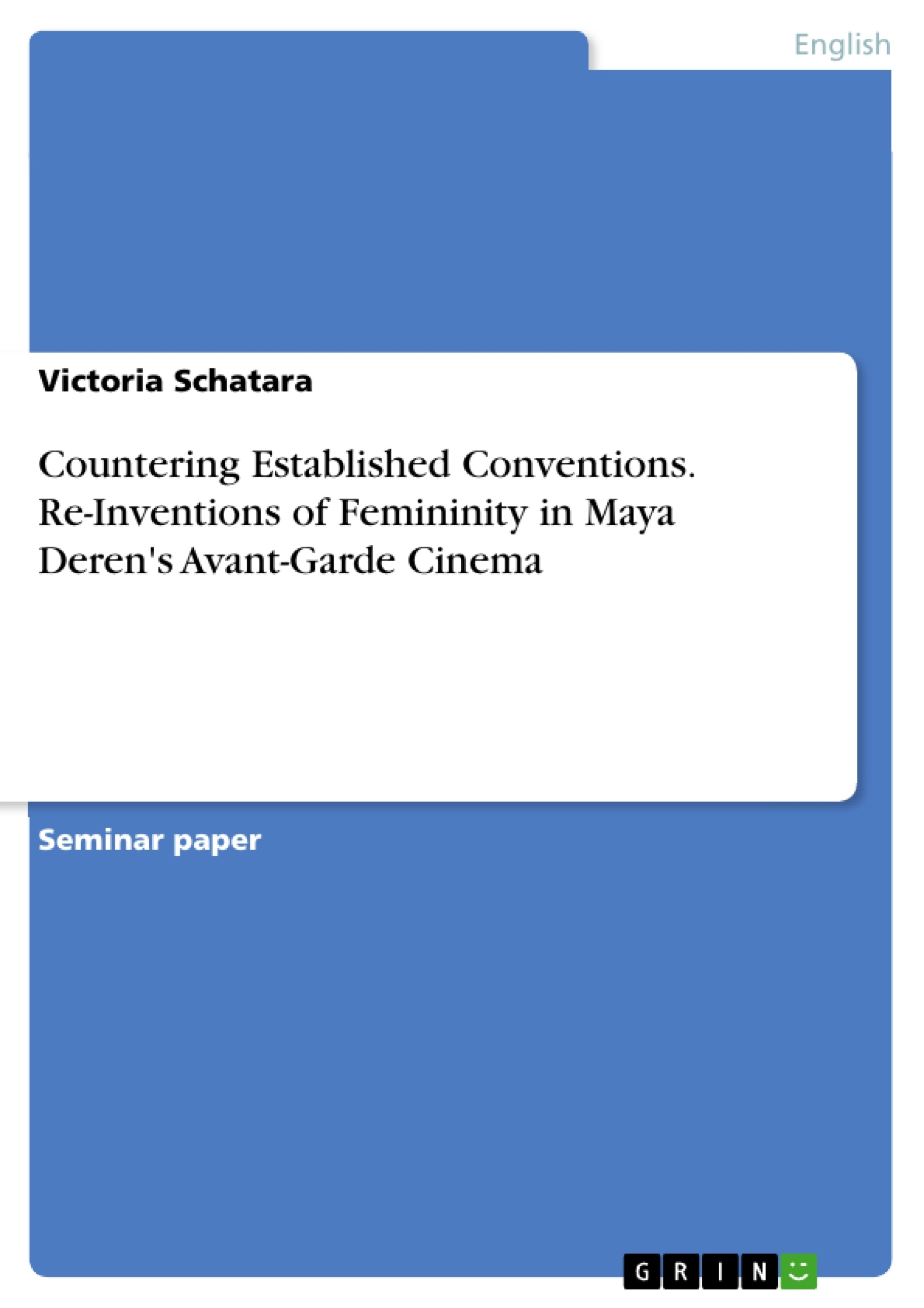The Ukrainian-American avant-garde video artist Maya Deren is going to be in the object of study in the main body of this paper which focuses on the question of what, in particular, makes her representations of femininity outstanding and contrary to the ones in the contemporary woman's film.
As to the structure of the paper at hand, the first part will briefly outline Simone de Beauvoir’s academic theory of femininity, the key aspects of representation of women in woman’s cinema and give information on avant-garde cinema. In the second part, then, Maya Deren's approach to gender will be introduced. Following and based on the first part, the third part will then closely analyze, how femininity is treated in her works and, thus, how it differs from the woman’s film’s approach. Finally, the results will be summarized into a conclusion and an outlook will be offered.
Inhaltsverzeichnis (Table of Contents)
- Introduction.
- I.) Theoretical Part.
- 2.1.) Simone de Beauvoir.
- 2.2.) The Woman's Film
- 2.3.) US-American Avant-Garde / Experimental Film in the 1940s.
- 3.) Maya Deren.
- 3.1.) Femininity in Maya Deren's Life and Works
- II.) Practical Part.
- 3.2.) In Meshes of the Afternoon (1943)
- 3.2.1.) The Protagonist.
- 3.2.1.1.) The "Mirror-Faced Woman".
- 3.1.1.2.) Femininity / Masculinity
- 3.2.2.) In Ritual in Transfigured Time (1946)
- 3.2.2.1.) Femininities / Masculinity
- 4.) Conclusion
Zielsetzung und Themenschwerpunkte (Objectives and Key Themes)
This paper examines the unique representation of femininity in the avant-garde cinema of Maya Deren, contrasting it with the prevailing depictions in the contemporary woman's film. It aims to understand what makes Deren's approach to femininity stand out and challenge established conventions.
- Simone de Beauvoir's theory of femininity as a social construct.
- The role of the woman's film in portraying women's lives and experiences.
- The development and characteristics of US-American avant-garde cinema in the 1940s.
- The exploration of femininity in Maya Deren's life and works.
- The analysis of Deren's films, "Meshes of the Afternoon" and "Ritual in Transfigured Time," to understand her unique representation of femininity.
Zusammenfassung der Kapitel (Chapter Summaries)
- Introduction: Introduces the main topic of the paper, exploring the concept of femininity in the context of Simone de Beauvoir's theory and the representation of women in the woman's film genre.
- Theoretical Part:
- Simone de Beauvoir: Discusses de Beauvoir's key arguments in "The Second Sex," emphasizing the social construction of femininity and the impact of male-dominated societal structures.
- The Woman's Film: Examines the key characteristics of the woman's film genre, including its focus on domesticity, emotional experiences, and the representation of women as either good or bad.
- US-American Avant-Garde / Experimental Film in the 1940s: Provides an overview of the context of avant-garde filmmaking in the 1940s, highlighting its experimental nature and its potential for challenging societal norms.
- Maya Deren:
- Femininity in Maya Deren's Life and Works: Introduces Maya Deren as a pioneering avant-garde artist and examines her personal and artistic approach to femininity.
- Practical Part:
- In Meshes of the Afternoon (1943): Analyzes the representation of femininity in Deren's film, "Meshes of the Afternoon," focusing on the protagonist and her experiences.
- In Ritual in Transfigured Time (1946): Analyzes the representation of femininity in Deren's film, "Ritual in Transfigured Time," focusing on the themes of femininity and masculinity.
Schlüsselwörter (Keywords)
This paper explores the representation of femininity in Maya Deren's avant-garde cinema, focusing on key concepts such as social construction of gender, the woman's film, avant-garde filmmaking, and the unique portrayal of female characters in Deren's films.
- Citar trabajo
- Victoria Schatara (Autor), 2019, Countering Established Conventions. Re-Inventions of Femininity in Maya Deren's Avant-Garde Cinema, Múnich, GRIN Verlag, https://www.grin.com/document/540069



